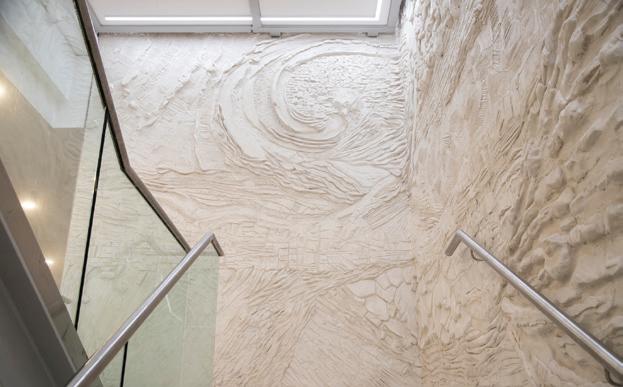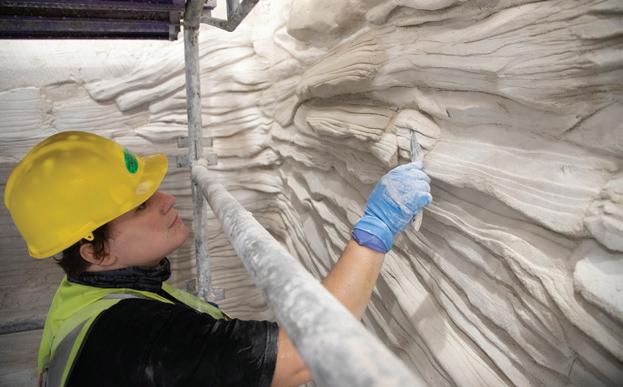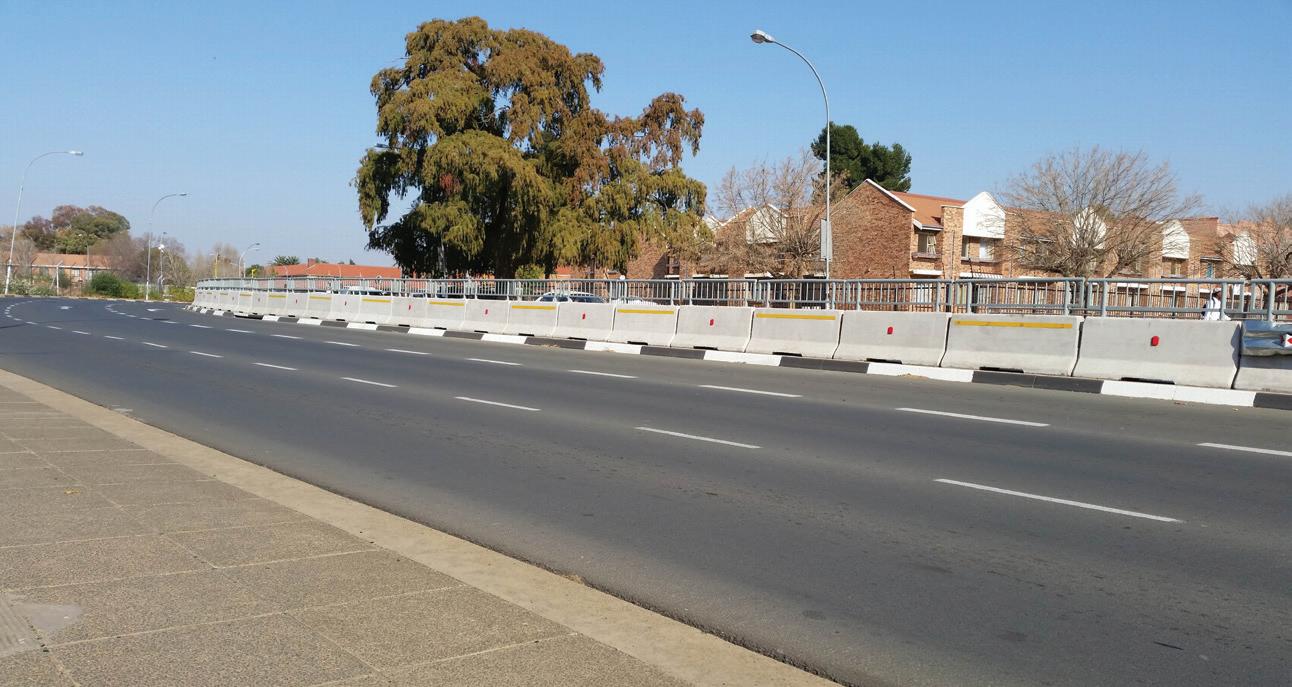
5 minute read
ART AT THE LEONARDO

(Left): VerticArt is a cementitious mortar specifically designed for application to vertical surfaces, to create reliefs and textures which can be sculpted and carved.
(Above): The earth's surface is represented by the sculpted rock layers that wrap the staircase vertically.
(Below): VerticArt was used to create reliefs and textures which were sculpted and carved.
CMA non-producer member Chryso has supplied innovative products to The Trinity Session for an impressive artistic creation in the foyer of The Leonardo in Sandton. Its VerticArt was chosen as the material of choice when The Trinity Session, a creative production team, embarked on the curation of a sculpted representation of a cross-section through earth, showing the strata formed by tectonic plates shifting and colliding, to form the intricate patterns of geological formations. Marcus Neustetter, a director of The Trinity Session, explains that this project called for an earthy, robust medium such as VerticArt, which is a cementitious mortar designed for application to verti-cal surfaces. The chemical make-up of the product allows


(Above, from top): The mural called for artists, who were identified based on the relevance of their previous work and interests, to fabricate the artwork and the off-shutter concrete substrate was prepared by affixing a stainless steel mesh to the vertical wall as reinforcement. A skim key coat was applied to this mesh before application of the VerticArt.
for a vertically applied maximum thickness of 150mm, making it ideal for relief three-dimensional (3D) artwork.

Work of art It was applied in various thicknesses and then carved and textured using palette knives, trowels, chisels, straight edges and wire brushes, to the exact creative brie f. A 0-48-hour carving window ensured that the artists had sufficient time to per fect the application and sculpting processes necessary to create the required 3D effect.
T he mur al was deliber ately not pigmented, resulting in a very realistic artistic rendition of a cross-section through the crust of the earth. This was further enhanced with focused lighting, giving the effect of an upward journey though geological aeons as visitors ascend the staircase. The project used 4,5 tonnes of VerticArt, covering 140m 2 and scaling a height o f 15m (three storeys). It required the specialised skills o f eight individual artists, in conjunction with the Chryso technical team, and took seven weeks to complete. The scale, innovative material, product methodology and conceptual approach ensured that the programme was not just a financial prospect for the materials supplier and the artistic curating team, but rather an opportunity for upliftment and growth for many of the artists, including emerging creative talent.
Talented artists The artists – Damien Grivas (team leader), Angelique Koekemoer, Ciara Struwig, Marlecia Marais, Patrick Rapai, Paul Setate and Zanré van der Walt – brought their own technical and creative touch to realising the vision of this work. “VerticArt was developed to allow artists to create reliefs and textures, which can be sculpted and carved. This massive and bold statement artwork is a first for Chryso’s VerticArt both in SA and worldwide, challenging architects, designers and artists to further explore the decorative potential of concrete,” says Neville Wearne, Chryso Southern Africa’s project manager.

REBLOC ROAD BARRIERS ENHANCE ROAD SAFETY
Concrete barriers in the median or along the verge of a roadway or bridge are never really noticed or considered until an unexpected collision brings one to the reality of what’s expected of these vehicle restraint systems (VRS).
CMA member, Rocla, partnered with REBLOC, the international leader in precast concrete road barrier technology, based in Austria, as exclusive licenceholder for its portfolio of products to the southern African region.
The REBLOC system includes a patented coupling and tension bar system, cast into the concrete, creating a continuous barrier chain, capable of harnessing and distributing the large energy forces associated with a vehicle collision. European and South African codes, EU1317 and SANS 51317 respectively, provide a list of different collisions to be used by vehicle restraint system designers and road engineers. Accordingly, REBLOC has a range of products to accommodate this full list, from lowest to highest containment levels. Crash-tested In order to be certified accordingly, it is a requirement that each barrier system be crash-tested in order to observe critical data for each test scenario relating to barrier movement, passenger safety and also to confirm that the system does not break up, or the vehicle could pass through into oncoming traffic.
Casting all the components into the concrete section ensures that there are no loose parts or accessories requiring safe storage during construction and subject to theft or vandalism during the life-cycle of the barrier system. After a collision with the barriers, a maintenance vehicle must realign the barriers into a

straight line and then assess damage to the concrete section. Depending on the severity of the impact damage, the barrier can then be left as is, repaired in situ or replaced with a new unit.
Justin Kretzmar, group sales engineer, says: “Replacement of barrier elements is generally only required if the damage is such that the concrete has spalled to the extent that the reinforcement within the barrier is visible. It’s critical that road designers consult the relevant SANS/EU code/s list of internationally recognised ‘containment level’ guidelines and assess the risk level for that particular road.
Growing demand “REBLOC vehicle restraint barriers have been crash-tested in Europe with real vehicles in order to conform to EN code requirements and also to obtain, among other things, the ‘working width’ and acceleration severity index data specific to each barrier system and containment level tested.
“Rocla has supplied the REBLOC systems on many projects across SA and Botswana, some of which have successfully sustained a considerable number of collisions. With the roads of SA constantly requiring increased safety for pedestrians and passengers alike, the REBLOC system, with its low maintenance and vandal-proof design, is perfectly positioned to make our roads safer.”
Rocla barriers can also be utilised for security installations such as airports or railways, to block of f road access for safety, illegal dumping or during construction projects and even for bulk material storage purposes.










